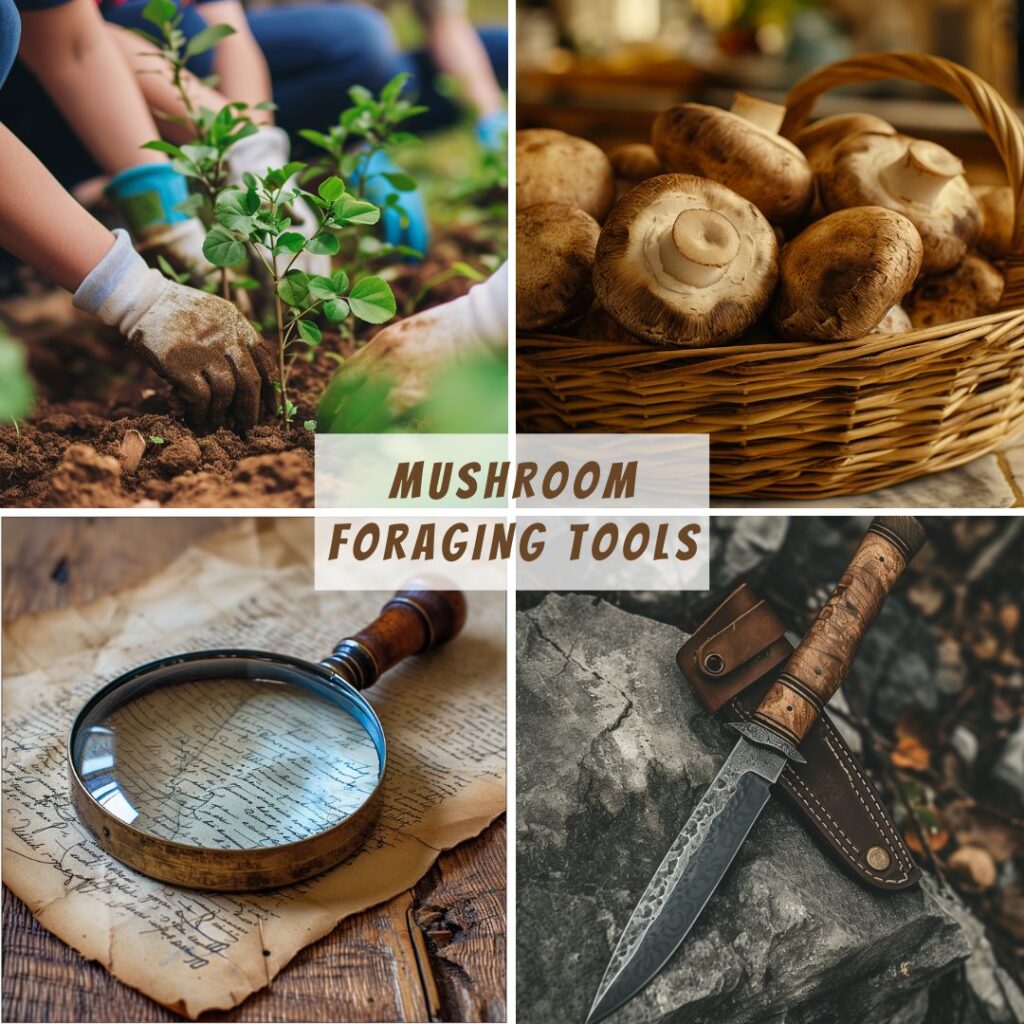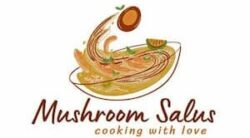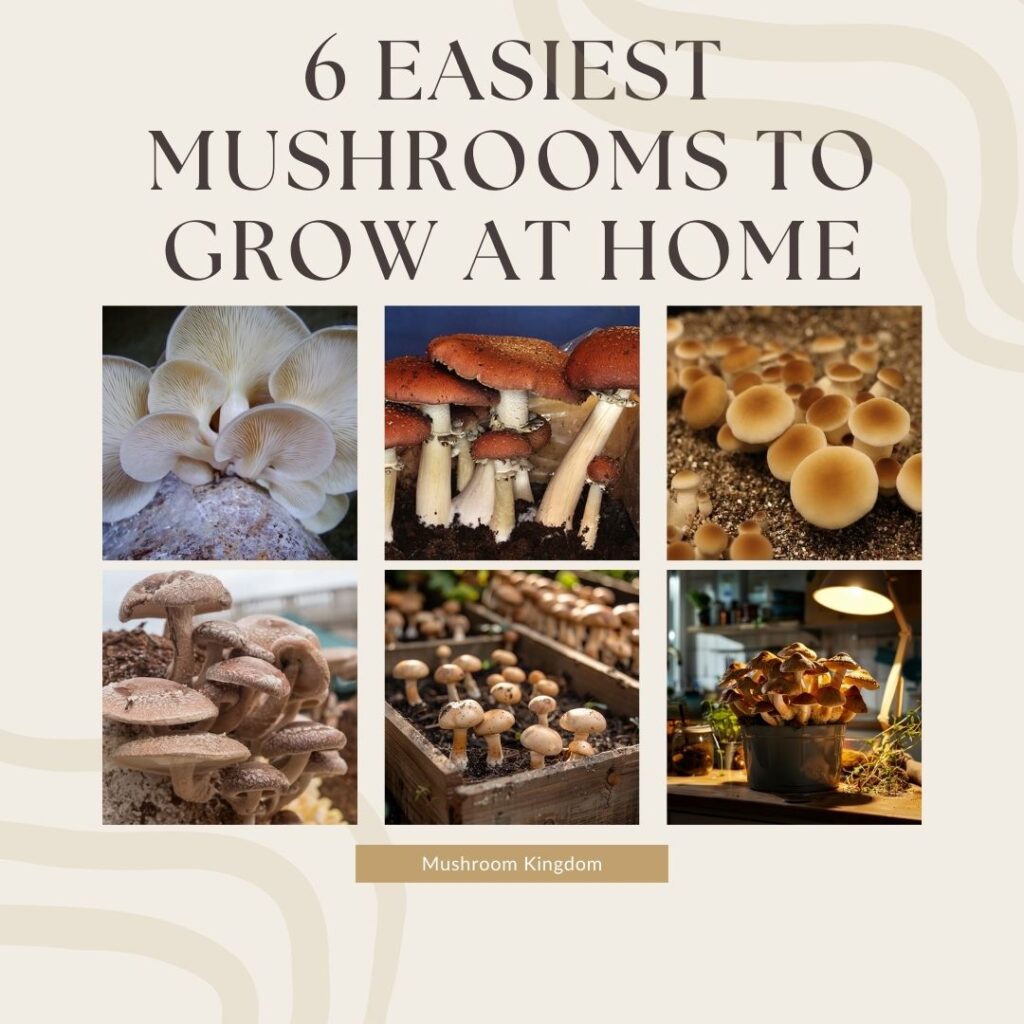Successful and safe hunting requires proper mushroom foraging tools and knowledge. This article explores the essential tools for mushroom foraging, provides tips for their use, and answers some frequently asked questions to ensure an enriching and safe foraging experience.

1. Foraging Basket or Bag
A foraging basket or bag is indispensable for collecting mushrooms. Choose a breathable container like a wicker basket or mesh bag to allow spores to disperse and keep mushrooms fresh. Avoid plastic bags as they trap moisture, causing mushrooms to become soggy and spoil.
2. Mushroom Knife
A mushroom knife, often equipped with a curved blade and a brush, is designed specifically for harvesting mushrooms. The blade allows for precise cutting, minimizing damage to the mycelium, while the brush helps clean dirt and debris from the mushrooms. Keeping the knife sharp ensures clean cuts, preserving the integrity of the mushroom and its habitat.
3. Field Guide
A reliable field guide is crucial for identifying mushrooms. Choose a guide that covers the region you are foraging in and includes detailed photographs and descriptions. Many field guides also offer tips on distinguishing between edible and poisonous mushrooms, which is vital for safety.
4. Notebook and Pencil
Documenting your finds helps improve your foraging skills and contributes to a personal record of mushroom growth patterns and habitats. A waterproof notebook and pencil can withstand outdoor conditions, ensuring your notes remain intact even in damp environments.
5. Magnifying Glass
A magnifying glass assists in examining small details of mushrooms, such as gill structure, spore color, and surface texture. These characteristics are often key in accurately identifying mushroom species.
6. Gloves
Wearing gloves protects your hands from potential irritants and contaminants found in the soil and on mushroom surfaces. They also provide a barrier when handling unknown species, reducing the risk of skin reactions or accidental ingestion of toxic substances.
7. GPS Device or Smartphone
A GPS device or smartphone with mapping applications ensures you can navigate back to your starting point, especially when foraging in unfamiliar or dense forests. Additionally, many apps provide location-based mushroom identification and community forums for sharing finds and tips.
8. Portable First Aid Kit
Accidents can happen in the wild. A portable first aid kit equipped with bandages, antiseptic wipes, tweezers, and any personal medication ensures you can address minor injuries promptly.
9. Water Bottle and Snacks
Staying hydrated and energized is essential during foraging trips. Carry a refillable water bottle and some high-energy snacks to keep you going throughout the day.
What are some beginner-friendly mushrooms to forage?
As a foraging guide, recommending beginner-friendly mushrooms involves selecting species that are easily identifiable and less likely to be confused with toxic varieties. Here are a few top choices:
- Morel Mushrooms: Easily recognizable by their honeycomb appearance, morels thrive in moist, wooded areas during spring. Their unique look makes them hard to mistake.
- Chanterelles: With their vibrant yellow-orange color and trumpet shape, chanterelles typically grow near hardwood trees in summer and fall. They emit a pleasant, fruity smell.
- Oyster Mushrooms: Found on decaying wood, oyster mushrooms display a distinct shelf-like structure with white to light gray caps. They grow in clusters, making them easy to spot.
- Puffballs: These round, white mushrooms appear in grassy areas and forests. Their interior should be pure white and marshmallow-like when fresh, differentiating them from potentially harmful look-alikes.
Tips for Using Mushroom Foraging Tools
Using mushroom foraging tools requires a blend of knowledge, skill, and careful attention to detail.
Start with a reliable field guide that offers clear images and descriptions to help identify different mushroom species. A magnifying glass proves invaluable for examining small details like gill structures and spore colors.
Carry a good-quality knife to cleanly cut mushrooms at the base, ensuring minimal damage to the mycelium. A breathable basket or mesh bag helps transport your finds without causing them to rot or sweat.
Pay attention to the environment and habitat, as certain mushrooms thrive in specific conditions. For example, chanterelles often grow near hardwood trees. Regularly clean your tools to avoid cross-contamination between different species.
Additionally, use a GPS device or app to mark your foraging spots, ensuring you can return to productive areas. By integrating these practices, you can enhance your foraging experience and ensure a sustainable harvest.
Some other valuable tips include:
- Cleaning Tools Regularly: After each foraging trip, clean your knife, basket, and gloves to remove any spores or dirt. This practice prevents the spread of contaminants and maintains the tools’ longevity.
- Proper Storage: Store your foraging tools in a dry, cool place to avoid rust and mold. A dedicated foraging kit bag can help keep everything organized and ready for the next adventure.
- Learning from Experience: Keep updating your field guide and notes based on your observations and findings. Over time, you will develop a more profound understanding of mushroom habitats and identification techniques.
- Engaging with the Community: Join local foraging groups or online forums. Sharing your experiences and learning from seasoned foragers can enhance your skills and knowledge.
Frequently Asked Questions
1. Is it necessary to have all these tools for mushroom foraging?
While not all tools are strictly necessary, having them enhances your foraging experience and safety. At a minimum, carry a basket, a mushroom knife, and a field guide. These items help you collect mushrooms effectively and identify them accurately, reducing the risk of picking toxic species.
2. Can I forage mushrooms without prior knowledge?
It’s risky to forage mushrooms without some basic knowledge. Many mushrooms have toxic look-alikes. Educate yourself using field guides, online resources, or by joining a local foraging group. Always err on the side of caution — if you’re unsure about a mushroom, do not consume it.
3. How do I clean and store my harvested mushrooms?
Clean mushrooms by brushing off dirt and debris with a soft brush or cloth. Avoid washing them with water, as mushrooms absorb moisture and can become mushy. Store them in a paper bag in the refrigerator to maintain freshness. Use them within a few days for the best taste and texture.
4. What should I do if I suspect I’ve picked a poisonous mushroom?
If you suspect you have picked a poisonous mushroom, do not consume it. Isolate the specimen from edible ones to avoid cross-contamination. If ingestion occurs, seek medical attention immediately and bring the mushroom for identification. Poisonous mushrooms can cause severe health issues or be fatal.
5. Are there any legal restrictions on mushroom foraging?
Legal restrictions on mushroom foraging vary by location. Some areas, such as national parks or private lands, may have prohibitions or require permits. Always research and adhere to local regulations to ensure you forage legally and responsibly.
6. How can I identify mushrooms accurately?
Accurate identification involves examining multiple characteristics: cap shape, color, gill attachment, spore print color, and habitat. Use a combination of field guides, mobile apps, and expert advice. Avoid relying solely on photos, as they may not capture all necessary details. When in doubt, consult an experienced forager or mycologist.
Final Thoughts on Mushroom Foraging Tools
Mushroom foraging offers an exciting and rewarding way to explore nature and enjoy fresh, wild mushrooms. Equipping yourself with the right tools and knowledge enhances your foraging experience, ensuring safety and success.
Whether you’re a beginner or an experienced forager, investing in quality tools and continuously learning about mushrooms and their habitats will enrich your adventures in the wild. Happy foraging!


